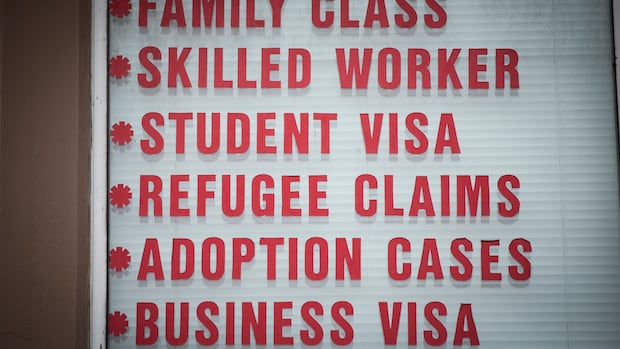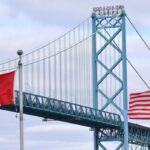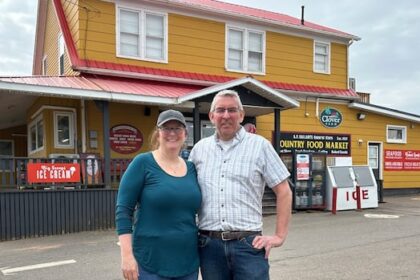Refugee claims in Saskatchewan have surged by almost 98 per cent following major federal and provincial immigration cuts, while the number of permanent residents dropped by more than half, federal statistics show.The number of refugee claims filed in the province climbed from 683 between April and June 2024 to 1,344 a year later, according to data from Statistics Canada. “I have a consult coming up with someone that’s looking at a refugee claim with no option to continue studying,” said Saskatoon immigration lawyer Chris Veeman. “This is a person that’s been a student, so they don’t have work experience, but it’s kind of the only option now for her.”Nationally, total asylum claims increased by 32 per cent between the second quarter of 2024 and the same period in 2025 — going from 363,505 claims to 479,542, according to the Statistics Canada data.How do dropping immigration numbers impact you? Tell us here.In Manitoba, asylum claims increased by 87 per cent. In Alberta they increased by 57 per cent, and B.C. saw an increase of 53 per cent, the data shows.Veeman said many immigrants are choosing to claim asylum because they are running out of other options to stay in Canada permanently, since Ottawa made significant changes to reduce immigration targets. “If someone files a claim today, they probably won’t get a hearing for about a year and a half,” he said. “That will buy you a year and a half of working in Canada, and maybe you’re sending money back to your family to keep them alive.”Veeman said people across Canada are running out of options. “The bigger problem is that we have all these non-PRs [permanent residents], like students and people on work permits that don’t necessarily have a pathway, but there’s, like, three million people and only 380,000 PR spots per year,” he said.”Some will leave. Some don’t want to go. Some will make refugee claims and others, maybe they will get married to a Canadian.”Sask. sees steepest permanent resident dropSaskatchewan has recorded the sharpest percentage decline in new permanent residents among the provinces, tying with Prince Edward Island, according to Statistics Canada’s data.Between April and June 2025, the province had 3,467 new permanent residents, down from 7,414 from the same time last year — a 53 per cent drop.Nationally, arrivals fell by 23 per cent, from 134,172 to 103,507.Ottawa’s latest immigration plan gives Saskatchewan roughly 1,000 more spots next year for the provincial nominee program, which allows provinces to nominate newcomers for permanent residency based on labour needs. But for thousands already here on temporary permits, it’s too little, too late. This year, Canada admitted 114,905 people through the program. Next year’s number drops to a maximum of 105,000, with a target of 91,500.Saskatchewan’s share will rise to 5,500 to 6,000 spots, up from just over 5,000 this year, according to Drew Wilby, the province’s deputy minister of immigration.”I think it is very manageable, a very sustainable number,” Wilby said in an interview. “We have to wait to see what those final numbers are from Immigration, Refugees and Citizenship Canada. But I think it should be somewhere in that ballpark.”Veeman said these numbers aren’t just data — they’re real people facing real consequences. “It’s wreaking havoc with people’s lives,” the immigration lawyer said. “Their families have sold their houses in order to fund them to come to Canada,” he said, with the goal of permanent residency. “Education is great, but it was really about getting PR in Canada,” he said.Subbiah S. came to Saskatoon with his family hoping to get permanent residency, but says changes in immigration have made that harder than expected. (Aishwarya Dudha/CBC)That includes people like Subbiah S., who packed his family’s life into two suitcases and moved to Saskatoon in March 2023. He said the hardest part wasn’t the prairie winter — it was the sudden cuts in immigration. “I bought a house as well, considering, ‘OK, next month I’ll be getting my [permanent residency] … but this bomb has dropped,” he said. “That hit me so hard.”Subbiah S., whom CBC is only identifying by his first name due to his concerns about his permanent residency application, has been working as a software developer. He had just completed two years of Canadian work experience — the milestone that was supposed to open the door to permanent residency. Instead, Ottawa’s policy changes shut the door just as he reached it, he said.New rules that came into effect this year for the points-based permanent residency application meant that in his case, he would no longer qualify for federal express entry through the “Canadian experience class,” for skilled workers with Canadian work experience. “I came here with a dream of getting PR here and settling down, but unfortunately things got switched up in the recent years,” he said. Temporary residents also falling Saskatchewan’s net number of non-permanent residents — which include international students and temporary foreign workers — has also dropped sharply, according to Statistics Canada.The province saw a net gain of 2,035 non permanent residents in spring 2024, compared to a net loss of 803 in the second quarter of this year. Stacey Hallman, an analyst with Statistics Canada’s Centre for Demography, says the data shows how quickly federal immigration policies reshape migration and population growth. “In Saskatchewan, the largest drop we see is in the number of immigrants … who are permanent residents,” she said in an interview. “The national story is more that we see the drop in non-permanent residents.”Hallman noted that provinces like Ontario and B.C., with large international student populations, are seeing the steepest declines among that group.Retention still a challengeSaskatchewan continues to lose more people to other provinces than it gains. The province posted a net loss of 1,022 people, mainly to Alberta, B.C., and Ontario in spring 2025, according to Statistics Canada.Veeman said immigration programs can’t fix that alone. “People are going to go where they’re going to be happy. The answer is just creating more and better opportunities here, a better quality of life,” he said. The province’s immigration minister said that retention is a key focus.”We’re trying to attach them to the job market, to communities, to make sure they want to stay, build a life, raise families, and continue contributing to Saskatchewan,” he said. As for Subbiah S., he is also considering moving his family to Alberta.With his work permit ticking down, he hopes can get in through that province’s provincial nominee program, since his employer is based in Alberta.”We just want to focus upon our future,” he said. “If nothing works out, then yes, we have to think about the other opportunities going forward.”
Refugee claims jump 98% in Sask. as immigration cuts leave newcomers in limbo











